Geophysics studies the physical phenomena that occur on Earth, both in the most superficial layers (crust) – where mineral resources (oil, ores, water) are housed – and in the deeper portions (mantle and core), which are known only from geophysical information. Among the physical phenomena studied we have:
- Heat
- Magnetism
- Radioactivity
- Gravity
- Electricity
- Propagation of elastic waves
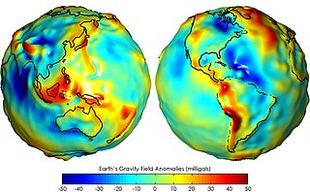
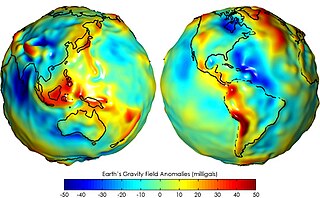


We can divide this branch of science into Pure Geophysics and Applied Geophysics. The first, in general, provides information for the study of the structure and composition of the Earth's interior. The second comprises a set of methods and techniques used to solve problems such as prospecting for ores, hydrocarbons and groundwater, environmental and engineering studies, among others.
Such methods have become a mandatory tool in mineral research and mining work. One of the main advantages of applying these techniques over traditional means of subsurface investigation, such as boreholes, is the speed in assessing large areas at a relatively lower cost. The use of geophysics to indicate mineralized zones, for example, can reduce the number of negative perforations (sterile holes) by 30% to 50%.
Despite the advantages, geophysical exploration should not be applied in isolation to mineral prospecting. It is part of a sequence of exploration that involves the application of various geological and geochemical methods of investigation.
Geophysics in mining
Prospecting geophysics investigates the first five kilometers of the Earth's crust, allowing the evaluation of local geological conditions through the contrasts of the physical properties of materials in the subsurface. These properties may have as their origin lithological differentiations and other heterogeneities of the environment, natural or not.
Variations in physical properties are related to the concentration of minerals that are economically important (mineral-ore) or to the structures where these minerals are found. As the concentration of mineral-ore is controlled by geological phenomena, it is possible, based on the knowledge of these phenomena, to establish a prospecting strategy with the most suitable geophysical methods for their detection.
In this context, it is possible to assertively plan essential steps during mineral research, such as the location of boreholes. In other phases of a mining enterprise, such methods also contribute significantly.
At the implementation stage of a mine and during its operation, geophysical logging methods provide great advantages, such as the determination of contact depths and geological structures, given the difficulty of full rock recovery during drilling. The assertive knowledge of contact depths and geological structures has a direct impact on the study and determination of mineralized zones.
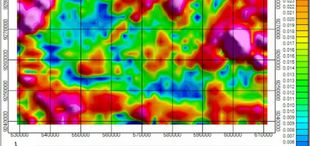
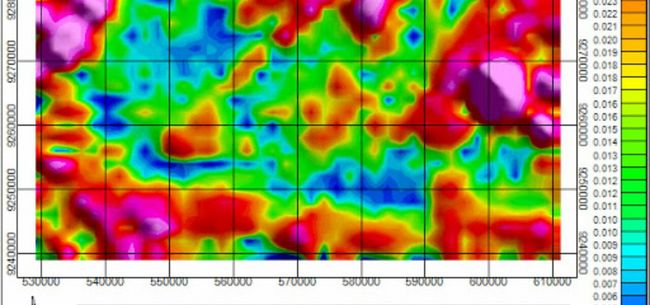
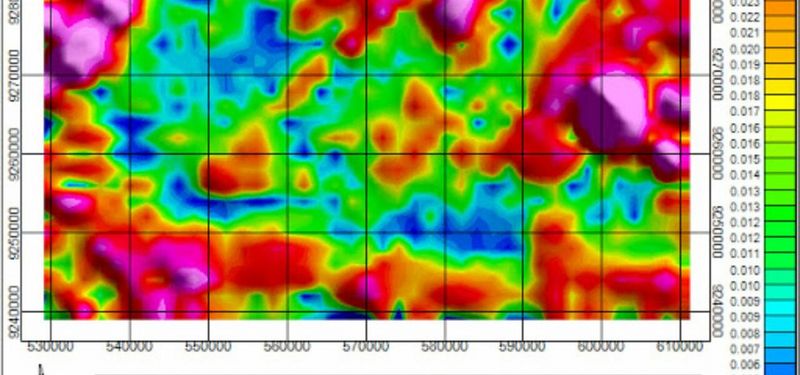
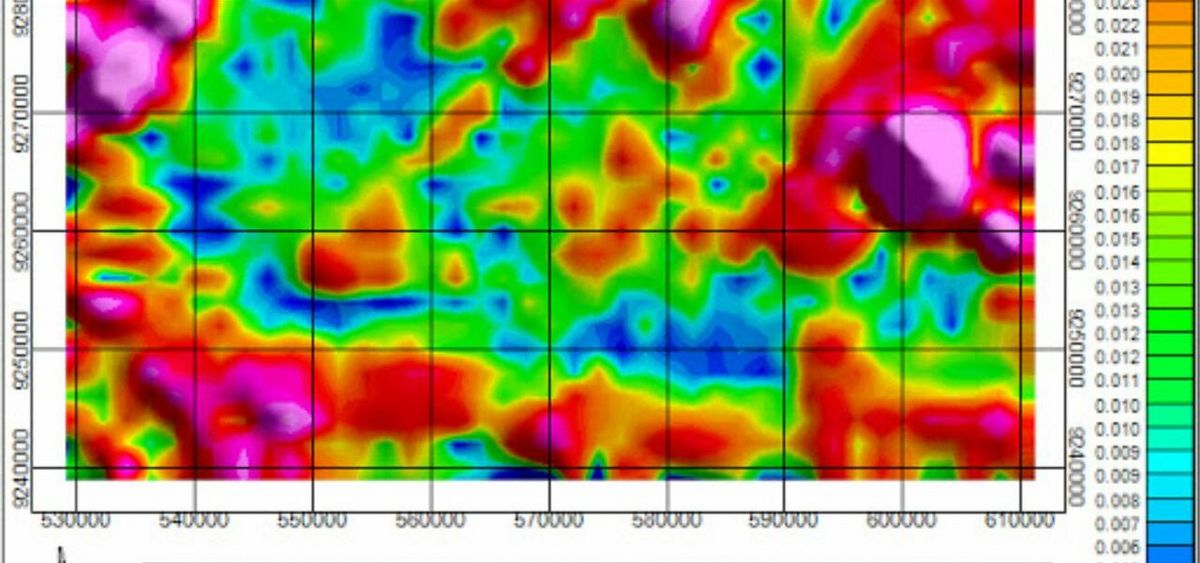
In general, in addition to the prospection and delineation of bodies and structures of interest in mineral research, geophysics has also been a great resource in the definition of areas for dams and piles of waste and tailings and during the monitoring of the behavior of these works that are affected by variations in climate, in addition to the modifications intrinsic to the evolution of these constructions.
In the final stages that follow the life cycle of a mining enterprise, geophysics can provide support in stages such as environmental monitoring.
Main Geophysical Methods applied in mining:
Among the main methods for mineral research on surfaces, the methods of electrical prospecting, gravimetry, magnetometry and electromagnetic prospecting stand out.
Gravimetry:
The application of this method is fundamentally related to the difference in rock densities. A body with a higher density than the surrounding rocks produces an increase in mass. This "extra" mass is known as a positive anomaly. The opposite, when a body has a lower density than the host rocks, is called a negative anomaly.
In addition to being used in the mining sector to describe metallic bodies, it can be used to reveal the subsurface shape of igneous intrusions; in hydrogeological investigations to determine the geometry of potential aquifers.
In this methodology, what is measured with the equipment, the gravimeters, is the variation in the value of g (gravity), which can be caused by a variety of geological situations. Gravimeters are very sensitive to identify variations caused by mineral deposits that can produce fluctuations in g values of the order of 0.001%.
Magnetometry:
It is one of the most versatile methods, both in ease and speed and for the lower cost for field surveying, although it is complex to handle. This technique detects magnetic anomalies in the Earth's field and has great usability in mineral prospecting.
Among the areas of expertise are: oil exploration, evaluation of thicknesses in basins, direct prospecting of magnetic minerals; groundwater in fractures, sediment thickness, engineering works, among others.
The rationale of this method is that magnetic observations provide information about the concentration of non-magnetic minerals, since they usually occur associated with minerals that produce magnetic anomalies.
The equipment used for these magnetometric surveys are variometers and magnetometers.
Iron ore deposits, most of the time, have an abundance of magnetite, so they can be easily located through magnetometric surveys. Other uses of this method is the localization of intrusive complexes carrying disseminated sulfides of copper, nickel, iron and molybdenum.
Electrical methods:
Electric methods for mineral prospecting of metals are widely used because they are low cost within geophysical prospecting. Basically, this method studies the behavior of the flow of electric current in the geological environment.
The most commonly used electrical methods in mineral prospecting are the following:
- Spontaneous Potential
- Induced Polarization
- Electroresistivity
The application of most electrical methods in mineral prospecting for metals consists of measuring the impedance of surface materials and interpreting it under the bases of geology.
In mineral deposits, resistivity values depend on the percentage of each ore present in the deposit, as well as its mode of distribution in the rock and, obviously, the composition of the ore mineral.
Electromagnetic Methods:
It is based on the propagation of low-frequency electromagnetic fields, either above or below the surface. Widely used in mineral exploration;
Electromagnetic methods for mineral prospecting involve the propagation of low-frequency electromagnetic fields. These methods have wide application and are based on two fundamental physical phenomena: electricity and magnetism. Both phenomena are interrelated.
The equipment is much more sophisticated, with transmission systems with generators and another reception system with coils. Field surveys go through rules for the positioning of the coils (horizontal and vertical) and also the arrangement of the acquisition lines in the field. The survey results are presented in distance versus angle read profiles.
Radiometry:
The application of nuclear techniques makes it possible to determine the distribution of a series of elements present in the minerals and rocks that make up the Earth.
Among the chemical elements present in these minerals, the natural radioactive elements arouse special interest for their economic and strategic value and for their usefulness in geochronological methods (methods that allow calculating the age of a given rock or mineral), through the isotopic ratio between the various radioactive elements and their series.
The method can be used in geological mapping, as different rocks can be recognized by their radioactive signatures, in the same way that it can also be used in direct mineral prospecting of radioactive minerals, and indirect prospecting of metal sulfides, in view of the relationship between mineralized zones associated with hydrothermal alteration processes and anomalous imbalances of U elements, Th and K.
